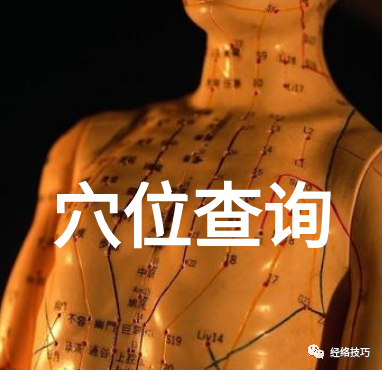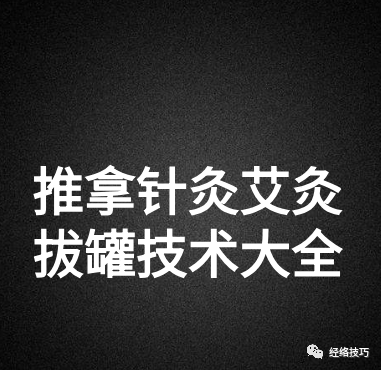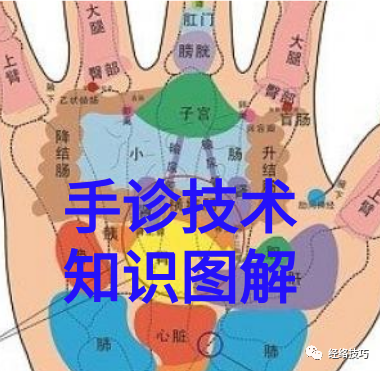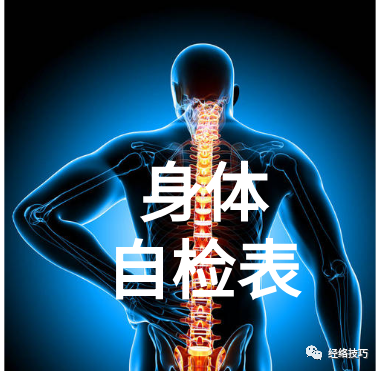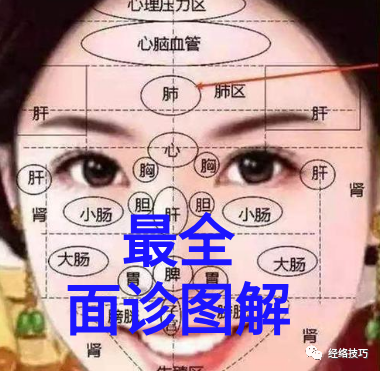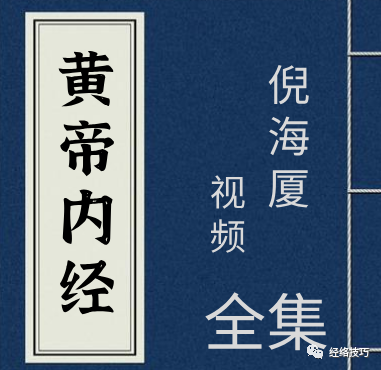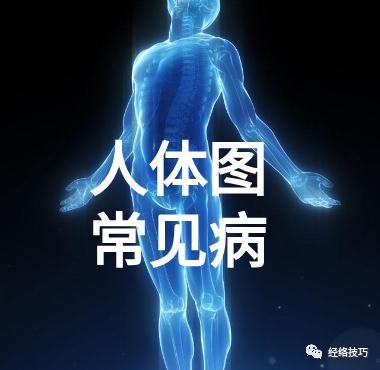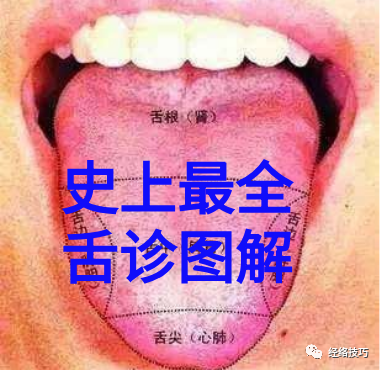
Click the image below to read ↓↓↓
|
|
|
|
|
|
|
|
|
|
—— The following is the main text ——
1. Pathogenesis of the Heart
1. Physiological and pathological characteristics of the heart: The heart is located in the upper jiao, opens to the tongue, connects with the vessels, and its manifestation is on the face, corresponding to the small intestine.
The heart houses the spirit (shen), is the sovereign of the five organs and six bowels, governs blood, and connects with the vessels throughout the body. When the yin and yang of the heart are balanced and the qi and blood are sufficient, the spirit is strong, and the qi and blood circulate throughout the body, nourishing the five organs and six bowels, and irrigating the limbs and nine orifices, maintaining normal life activities. The pericardium serves as the outer defense of the heart, protecting it and warding off external pathogens. The heart is an important internal organ, known as the “ruler’s organ.”
The main physiological functions of the heart are to govern the spirit and the blood vessels. Therefore, any pathological changes in the heart can lead to abnormalities in blood circulation and changes in mental and emotional states. These pathological changes are the result of imbalances in the heart’s yin, yang, qi, and blood. Thus, the imbalance of the heart’s yin, yang, qi, and blood is the internal basis for cardiac diseases.
2. Basic pathological changes of the heart: Due to the different roles of yin and yang, qi and blood in the heart’s functions of governing blood vessels and spirit, the imbalances of the heart’s yin, yang, qi, and blood can lead to various pathological changes depending on the conditions of deficiency or excess, cold or heat.
(1) Imbalance of heart qi and heart yang: The imbalance of heart qi and heart yang mainly manifests as either deficiency of yang qi or excess of yang qi.
① Deficiency of heart yang: This primarily manifests as deficiency of heart qi and deficiency of heart yang.
Heart qi deficiency: Heart qi deficiency is often caused by prolonged illness leading to physical weakness, aging, excessive sweating depleting qi, or congenital insufficiency. Since heart qi is the driving force for blood circulation, insufficient heart qi leads to a decline in the heart’s function of governing blood vessels. As blood is the material basis for the spirit, when heart qi is deficient, the driving force is weak, and blood circulation is insufficient, the spirit is not nourished, resulting in both a deficiency of the spirit and a general deficiency of qi. Clinically, this is characterized by palpitations, shortness of breath, and fatigue.
Heart yang deficiency: Heart yang deficiency often develops from severe heart qi deficiency; it can also be caused by cold dampness or phlegm obstructing heart yang, or by a constitution of yang deficiency, emotional distress damaging heart qi, or prolonged illness leading to malnourishment. When yang is deficient, cold arises internally; when qi is deficient, blood circulation is weak, leading to insufficient nourishment of the spirit. Therefore, the basic pathological changes of heart yang deficiency mainly manifest as insufficient spirit, excess yin, and blood circulation obstruction.
1. Insufficient spirit: The physiological function of the heart governing the spirit loses the stimulation and excitement of yang qi, leading to weakened mental activity, difficulty in excitement, and clinical manifestations such as mental fatigue, sluggishness, and excessive sleep.
2. Excess yin: When yang is deficient, cold arises; insufficient heart yang leads to reduced warming function, resulting in clinical manifestations of aversion to cold, preference for warmth, and cold extremities.
3. Blood circulation obstruction: Blood flows when warmed and coagulates when cold. Insufficient heart yang leads to a decline in the heart’s function of governing blood vessels, causing blood stagnation, and potentially leading to obstruction of the heart vessels, resulting in symptoms such as cold extremities, pale or cyanotic complexion, chest tightness, stabbing pain, and a rough or intermittent pulse.
If heart yang is severely deficient, or if cold pathogens violently damage yang qi, or if phlegm obstructs the heart orifices, it can lead to a collapse of heart yang, resulting in profuse sweating, cold extremities, confusion, and a weak pulse, indicating a critical condition of impending loss of yang qi.
② Excess heart yang: This primarily manifests as excessive heart fire and phlegm-fire disturbing the heart.
Excess heart fire: Excess heart fire, also known as heart fire, is characterized by excessive heart yang. Internal invasion of heat pathogens, emotional distress leading to internal fire, excessive consumption of spicy and warming foods, or dysfunction of the organs leading to internal heat can all lead to excessive heart fire. The main pathological changes of excessive heart fire are:
1. Fire disturbing the spirit: Fire qi connects to the heart; when heart fire is internally blazing, it disturbs the spirit, leading to symptoms such as irritability, insomnia, and even delirium or confusion.
2. Abnormal blood circulation: The heart governs blood vessels; heat forces blood to rise, and excessive heart fire leads to rapid and thin pulse, with symptoms such as palpitations, flushed face, red tongue, and rapid pulse, and even various types of bleeding due to blood heat.
3. Upward inflammation of heart fire: Fire nature rises; the heart opens to the tongue, and heart fire can rise along the meridians, leading to symptoms such as red and painful tongue tip, mouth sores, and if heart fire descends to the small intestine, it can cause symptoms such as yellow and painful urination, hematuria, and burning pain during urination.
4. Significant heat symptoms: Excess yang leads to heat; excessive heart fire often presents with significant heat symptoms such as fever, thirst for cold drinks, yellow urination, and constipation.
Phlegm-fire disturbing the heart: Liver qi stagnation can transform into fire, leading to liver fire stirring heart fire, resulting in a combination of heart and liver fire, which can consume fluids into phlegm. Phlegm and fire combine to disturb the spirit, leading to confusion as the main clinical feature.
(2) Imbalance of heart blood and heart yin: The imbalance of heart blood and heart yin mainly manifests as heart blood deficiency, heart yin deficiency, and heart blood stasis.
1. Heart blood deficiency: Heart blood deficiency is often caused by blood loss, insufficient blood production, emotional distress, or depletion of heart blood. The basic pathological changes of heart blood deficiency are:
1. Blood deficiency: Insufficient heart blood leads to empty blood vessels, and blood governs nourishment, resulting in signs of overall blood deficiency, such as pale complexion, pale lips, and a thin and weak pulse.
2. Spirit disturbance: Blood deficiency leads to insufficient nourishment of the heart, resulting in palpitations and anxiety; the spirit cannot settle, leading to weakened mental focus, confusion, insomnia, vivid dreams, and restlessness.
2. Heart yin deficiency: Heart yin deficiency refers to the deficiency of heart yin, often caused by excessive mental strain, prolonged illness, or emotional distress damaging heart yin. The basic pathological changes of heart yin deficiency include:
1. Internal heat: Yin fluid deficiency cannot restrain yang, leading to internal heat. Symptoms include five hearts feeling hot, tidal fever, night sweats, thirst, red face, red tongue, and thin rapid pulse.
2. Spirit disturbance: Heart yin deficiency leads to insufficient restraint of heart yang, resulting in excessive heart yang, internal heat disturbing the spirit, leading to symptoms such as restlessness, mental agitation, and insomnia.
3. Accelerated blood flow: Internal heat forces blood to flow rapidly, leading to a thin and rapid pulse, affecting the heart’s function of governing blood vessels.
From the perspective of pathogenesis, although heart blood deficiency and heart yin deficiency both belong to the category of insufficient yin and blood, heart blood deficiency is purely a lack of blood, leading to insufficient nourishment of the spirit and blood vessels, while heart yin deficiency includes heart blood deficiency and primarily manifests as an inability of yin to restrain yang, leading to excessive heart yang and internal heat. Therefore, heart blood deficiency is characterized by pale complexion, while heart yin deficiency is characterized by internal heat.
3. Heart blood stasis: Cold stagnation in the heart vessels or phlegm accumulation can lead to heart blood stasis. Fatigue and cold can often trigger or exacerbate this condition.
When the heart’s qi and blood circulation is obstructed, it can lead to blood stasis, with clinical manifestations such as palpitations, anxiety, chest tightness, and severe pain.
In summary, the heart governs blood vessels and houses the spirit, its manifestation is on the face, it opens to the tongue, and its meridian is the hand shaoyin meridian, which corresponds to the small intestine. This specific functional relationship forms the heart system, and thus the pathological changes of the heart are pathological responses at various levels of this system, primarily manifested in the blood vessels and spirit.
In terms of blood vessels, cold leads to blood stagnation, causing chest pain and cold extremities; heat leads to erratic blood flow, causing a red complexion and bleeding; deficiency leads to weak circulation, causing a thin or rough pulse; excess leads to poor circulation, blood vessel obstruction, and stasis.
In terms of the spirit, cold leads to insufficient spirit, causing a calm demeanor and lethargy, and in severe cases, loss of consciousness; heat leads to disturbed spirit, causing agitation and insomnia, even delirium; deficiency leads to fatigue and lack of speech; excess leads to erratic emotions, excessive joy, or uncontrollable sadness, or mania. Sweat is the fluid of the heart; excessive sweating can lead to loss of heart yang, while excessive heart fire can lead to a red and painful tongue, and heart fire descending to the small intestine can cause painful urination.
3. Relationship between heart disease and other organs: The relationship between heart disease and other organs mainly includes the pathological interactions between the heart and the lungs, spleen, liver, kidneys, and small intestine.
(1) Heart and lungs: The heart and lungs reside in the upper jiao, with heart qi ascending to the lungs, and the lungs governing respiration and assisting the heart in circulating blood. Therefore, the pathological interactions between the heart and lungs mainly manifest in the dysfunction of qi and blood.
1. Weak lung qi leads to insufficient zong qi, which cannot assist the heart in circulating blood, resulting in weak heart qi. Weak heart qi leads to insufficient nourishment of the lungs, causing lung qi deficiency. The mutual influence of heart and lung qi deficiency ultimately leads to heart-lung qi deficiency, clinically manifested as palpitations, shortness of breath, cough, and wheezing, especially during exertion, with a low voice and weak breath, and chest tightness.
2. Weak lung qi or failure of lung function can affect the heart’s function of governing blood vessels, leading to sluggish blood flow, resulting in chest tightness, shortness of breath, and symptoms of heart blood stasis such as cyanosis of the lips and purple tongue.
3. Insufficient heart qi or weak heart yang leads to poor blood circulation, which can also affect the lung’s descending function, resulting in symptoms such as chest tightness, stabbing pain, cough, and wheezing.
4. Excessive heart fire can injure lung yin, leading to symptoms of heart disturbance and insomnia, as well as cough and hemoptysis due to lung damage.
5. In the development of warm diseases, the disease can directly transition from the lung wei stage to the heart ying stage, known as “reverse transmission to the pericardium.” Clinically, this is initially manifested as fever, slight aversion to cold, and cough, followed by high fever, confusion, and a red tongue.
(2) Heart and spleen: The heart governs blood, while the spleen generates and regulates blood, so the pathological interactions between the heart and spleen mainly manifest in the generation and circulation of blood.
1. Heart yang deficiency or heart blood deficiency can affect the spleen’s function of transformation, leading to dysfunction. Conversely, spleen deficiency can lead to insufficient qi and blood generation, resulting in heart deficiency.
1. Spleen disease affecting the heart: Spleen qi deficiency leads to insufficient blood generation; or if the spleen fails to regulate blood, excessive blood loss can affect the heart, leading to heart blood deficiency. Clinically, this is characterized by symptoms of spleen qi deficiency such as pale complexion, fatigue, poor appetite, and loose stools, along with symptoms of heart blood deficiency such as palpitations, insomnia, forgetfulness, and a thin pulse.
2. Heart disease affecting the spleen: The heart circulates blood to nourish the spleen; if excessive thinking depletes heart blood, the resulting blood deficiency cannot nourish the spleen, affecting its function. Clinically, this presents as symptoms of heart blood deficiency and spleen qi deficiency.
Whether spleen qi deficiency leads to heart blood deficiency or heart qi deficiency and blood loss affect the spleen’s function, the heart and spleen mutually influence each other, ultimately leading to a syndrome of both heart and spleen deficiency. Clinically, this is manifested as symptoms of spleen qi deficiency such as poor appetite and abdominal distension, heart blood deficiency symptoms such as palpitations, and symptoms of insufficient nourishment of the spirit such as insomnia, vivid dreams, and overall qi and blood deficiency symptoms such as dizziness, pale complexion, and fatigue.
Additionally, the heart governs the circulation of blood, and the spleen has the function of regulating blood. Under the influence of both the heart and spleen, blood circulates normally along the vessels without overflowing. When the functions of the heart and spleen are abnormal, bleeding disorders can occur.
(3) Heart and liver: The heart governs blood, while the liver stores blood; the heart governs the spirit, while the liver governs the smooth flow of qi. Therefore, the pathological interactions between the heart and liver mainly manifest in blood and spirit.
1. Blood aspect: Insufficient heart and liver yin blood often influence each other; heart blood deficiency can lead to liver blood deficiency. Conversely, liver blood deficiency can weaken heart blood. Therefore, clinically, symptoms of heart blood deficiency such as palpitations, pale complexion, thin pulse, and symptoms of liver blood deficiency such as dizziness, brittle nails, numbness, and reduced vision can often be seen together.
Thus, blood deficiency syndrome often presents with both heart and spleen deficiency, as well as heart and liver blood deficiency. The syndrome of heart and liver blood deficiency presents with symptoms of heart blood deficiency and liver blood deficiency, leading to insufficient nourishment of the spirit and eyes.
2. Spirit aspect: When both the heart and liver are affected, it often manifests as mental abnormalities. For example, heart and liver blood deficiency leads to insufficient nourishment of the heart, resulting in restlessness, insomnia, and vivid dreams. If heart yin is deficient, internal heat can arise, leading to palpitations, irritability, insomnia, and vivid dreams, often accompanied by symptoms of irritability, dizziness, and red face due to liver qi rising. This is a result of the deficiency of both heart and liver yin blood, where the yang qi of the heart and liver is not properly restrained. For more information on acupuncture points, follow the “Meridian Techniques” public account, click on the acupuncture point query, or input any acupuncture point in the public account to find the point!
In summary, in certain mental and emotional disorders, the heart and liver mutually influence each other, leading to qi stagnation and abnormal mental states. Conversely, emotional disturbances can also lead to liver qi stagnation, and even liver qi rising.
(4) Heart and kidneys: The relationship between the heart and kidneys mainly involves the balance of water and fire. The imbalance of yin and yang, water and fire, and qi and blood between the heart and kidneys leads to the condition known as “heart-kidney disharmony.” The main pathological manifestations include kidney water deficiency and excessive heart fire, as well as heart and kidney yang deficiency.
1. Kidney yin deficiency and excessive heart yang: Kidney water deficiency cannot nourish heart yin, leading to excessive heart yang, resulting in symptoms such as palpitations, irritability, insomnia, and weakness in the lower back and knees, as well as nocturnal emissions in men and menstrual irregularities in women. This is known as “heart-kidney disharmony” or “water-fire imbalance.”
2. Heart and kidney yin deficiency: Heart and kidney yin deficiency leads to excessive heart fire, resulting in symptoms such as five hearts feeling hot, weight loss, dry mouth, and sores in the mouth and tongue.
3. Heart yang deficiency and water retention: Heart yang deficiency cannot warm the kidneys, leading to cold water accumulation, resulting in symptoms such as palpitations, edema, and cough.
Additionally, the mutual influence of heart blood deficiency and kidney essence deficiency can lead to dizziness, tinnitus, insomnia, vivid dreams, and weakness in the lower back and knees. This is also a manifestation of the physiological dysfunction between the heart and kidneys.
(5) Heart and small intestine: The heart and small intestine are interconnected, so their pathological interactions can occur. Heat can transfer from the heart to the small intestine, and excess heat in the small intestine can also affect the heart.
1. Heat transferring from the heart to the small intestine: Excess heart fire can lead to symptoms such as irritability, mouth sores, and red and painful tongue tip. If heart fire descends, it can affect the small intestine’s ability to separate clear from turbid, leading to symptoms such as yellow and painful urination, hematuria, and burning pain during urination, known as “heat transferring from the heart to the small intestine,” also referred to as “small intestine excess heat,” which can be treated with methods to clear the heart and promote urination.
2. Small intestine excess heat affecting the heart: Excess heat in the small intestine can also rise to the heart, leading to symptoms such as irritability, red tongue, and mouth sores. In treatment, it is necessary to use both heart-clearing and small intestine-clearing herbs.
2. Pathogenesis of the Lungs
1. Physiological and pathological characteristics of the lungs: The lungs reside in the chest, serving as the canopy of the five organs and six bowels, connecting to the airways and throat, opening to the nose, collectively known as the lung system. The lungs correspond to the large intestine. The lungs govern qi and are responsible for respiration, serving as the site for gas exchange between the body and the environment. The lungs assist the heart in circulating blood and regulate water pathways, serving as the upper source of water, and connect with the skin and hair to nourish the skin. The lungs are delicate organs, intolerant to cold and heat, preferring clarity and dryness, and their qi descends smoothly. Therefore, external pathogens often first attack the lungs. The pathological changes of the lungs mainly manifest as respiratory dysfunction, water metabolism disorders, impaired surface barrier function, qi generation, blood circulation disorders, and certain skin diseases.
2. Basic pathological changes of the lungs: Lung diseases can be classified into deficiency and excess; deficiency is often due to qi deficiency and insufficient yin fluids, while excess is often caused by wind, cold, dryness, heat, phlegm, and dampness attacking the lungs.
(1) Lung failure to disperse and descend: The lung’s dispersing and descending functions are two aspects of lung qi movement. Although they are distinct, they influence each other; both dispersing and descending are necessary for normal lung function. Lung qi failure to disperse and descend is often caused by external pathogens attacking the surface, phlegm obstructing the lung channels, or excessive liver qi rising, causing qi and fire to ascend and invade the lungs, or due to lung qi deficiency or lung yin deficiency.
1. Lung qi not dispersing: Lung qi not dispersing refers to the failure of lung qi to circulate. This can lead to the following pathological changes:
Respiratory obstruction: Normal lung dispersing and descending functions ensure smooth breathing. When lung qi fails to disperse, qi movement is hindered, leading to symptoms such as nasal congestion and cough.
2. Stagnation of defensive qi: The lungs connect with the skin and govern qi, dispersing defensive qi to the skin. When the lungs fail to disperse, defensive qi stagnates, leading to tight pores and symptoms such as aversion to cold, fever, and absence of sweating.
3. Lung qi not dispersing and lung qi not circulating are roughly similar, but lung qi not dispersing often refers to external pathogenic conditions, while lung qi not circulating often refers to internal injuries.
2. Lung failure to clear and descend: Lung failure to clear and descend refers to the lung’s failure to clear and descend qi, leading to reduced lung function. Clinically, this manifests as chest tightness, shortness of breath, cough, and excessive phlegm. Prolonged coughing can damage lung qi, leading to further lung qi rising. Lung qi rising and lung failure to clear and descend are similar, but cough and qi rising are more severe than lung failure to clear and descend.
Lung qi not dispersing or lung failure to clear and descend can lead to lung qi rising, causing shortness of breath, and dysfunction of water pathways, leading to symptoms such as reduced urination and edema. Further development can also damage lung qi and lung yin, leading to lung qi deficiency or lung yin deficiency.
(2) Lung qi deficiency: Lung qi deficiency, also known as lung qi weakness, is often caused by prolonged lung failure to disperse, or due to chronic illness leading to qi deficiency, or excessive strain damaging lung qi. In addition to the general changes associated with qi deficiency, lung qi deficiency primarily manifests as:
1. Reduced respiratory function: Lung qi deficiency leads to insufficient gas exchange, resulting in symptoms such as cough, shortness of breath, low voice, and even wheezing and difficulty breathing.
2. Accumulation of water and fluids: The lungs govern water and are the upper source of water. Lung qi deficiency cannot regulate water pathways, affecting the metabolism of water and fluids, leading to clear phlegm or even edema.
3. Weak defensive yang: Lung qi deficiency leads to insufficient defensive qi, resulting in weak surface functions, leading to spontaneous sweating and aversion to cold.
(3) Lung yin deficiency: Lung yin deficiency refers to the deficiency of lung yin fluids and the pathological changes of excessive internal heat. This is often caused by heat pathogens burning the lungs, or phlegm-fire damaging the lungs, or excessive emotional distress leading to internal heat damaging the lungs, or prolonged coughing damaging lung yin. Symptoms of lung yin deficiency include dry cough without phlegm or with scanty sticky phlegm, shortness of breath, tidal fever, night sweats, red cheeks, and even blood-streaked phlegm. Lung yin deficiency can also lead to kidney damage, resulting in lung-kidney yin deficiency.
The lungs are the gateway for qi movement, governing respiration and participating in regulating water metabolism. The lungs are closely connected to the external environment and are easily affected by external pathogens. Generally, the pathological changes of the lungs can be divided into excess and deficiency; excess can be due to heat obstruction, phlegm obstruction, water accumulation, or blood stasis, while deficiency can be due to qi deficiency, yin deficiency, or both qi and yin deficiency. Lung deficiency often arises from the transformation of excess conditions, and there can also be mixed excess and deficiency symptoms.
3. Relationship between lung disease and other organs: The pathological influence of the lungs on the heart has been previously discussed; here we will only discuss the pathological transmission between the lungs and the spleen, liver, kidneys, and large intestine.
(1) Lung and spleen: The lungs govern qi, while the spleen benefits qi; the lungs govern water, while the spleen governs the transformation of water and dampness. Therefore, the pathological relationship between the lungs and spleen mainly manifests in the abnormal functions of qi and water metabolism.
1. Insufficient qi generation: Spleen qi deficiency leads to insufficient transformation, resulting in weak lung qi and symptoms such as poor appetite, loose stools, abdominal distension, fatigue, and even edema.
2. Water metabolism disorders: Spleen dysfunction leads to water not being transformed into fluids, leading to internal dampness, which can accumulate in the lungs, causing cough, wheezing, and phlegm sounds. The metabolism of water is marked by the lungs but rooted in the spleen. The movement of phlegm is primarily governed by the spleen, while its storage is in the lungs, so treatment should focus on strengthening the spleen, drying dampness, and clearing phlegm from the lungs. Conversely, weak lung qi fails to disperse and regulate water pathways, leading to poor water metabolism, water retention, and symptoms such as edema, fatigue, abdominal distension, and loose stools.
(2) Lung and liver: The lungs govern qi, while the liver governs smooth flow; therefore, the relationship between the lungs and liver affects the movement of qi and blood. The pathological influence mainly manifests in the abnormal movement of qi and blood.
1. Abnormal movement of qi: Liver qi stagnation can lead to heat, which can damage the lungs, leading to symptoms such as rib pain, irritability, cough, and hemoptysis.
2. Poor circulation of qi and blood: When the body’s qi is smooth, the circulation of qi and blood is unobstructed. If the lung and liver qi movement is dysfunctional, it can lead to stagnation of qi and blood stasis.
(3) Lung and kidneys: The lungs are the master of qi, while the kidneys are the root of qi; the lungs are the upper source of water, while the kidneys govern water. The lungs belong to metal, while the kidneys belong to water, and metal and water generate each other. Therefore, the pathological relationship between the lungs and kidneys mainly manifests in respiratory abnormalities, water metabolism disorders, and yin fluid deficiency.
1. Respiratory abnormalities: Insufficient kidney essence can lead to qi floating upwards, or lung qi deficiency can damage kidney qi, leading to weak lower qi and respiratory difficulties, resulting in symptoms such as cough, shortness of breath, and cold extremities.
2. Water metabolism disorders: Lung failure to disperse and regulate water pathways can affect the kidneys, leading to water retention and symptoms such as edema and difficulty urinating. If wind pathogens attack the lungs, lung qi fails to disperse, leading to water retention and symptoms such as fever, aversion to cold, and difficulty urinating.
3. Yin fluid deficiency: The yin fluids of the lungs and kidneys generate each other. If lung yin is damaged, it can lead to kidney yin deficiency, and vice versa. This mutual influence can lead to lung-kidney yin deficiency, resulting in symptoms such as dry cough, hoarseness, tidal fever, night sweats, and weakness in the lower back and knees.
(4) Lung and large intestine: The lungs and large intestine are interconnected; therefore, their pathological interactions manifest as lung failure to disperse and dysfunction of the large intestine’s transmission.
1. Lung failure to clear and transmit: Excess lung heat can damage fluids, leading to constipation, known as excess heat constipation. Conversely, lung qi deficiency can lead to constipation due to insufficient transmission, resulting in symptoms such as dry stools.
2. Dysfunction of transmission: Dysfunction of the large intestine can lead to lung qi failure to disperse. For example, if the large intestine is obstructed, it can lead to lung failure to clear, resulting in symptoms such as chest tightness, cough, and difficulty breathing. In treatment, it is necessary to clear the large intestine to restore lung function.
3. Pathogenesis of the Spleen
1. Physiological and pathological characteristics of the spleen: The spleen is located in the middle jiao, corresponding to the stomach, governing the muscles and limbs, opening to the mouth, and its manifestation is on the lips, corresponding to the abdomen. The spleen governs transformation and is the source of postnatal qi and blood, and it can also regulate the circulation of blood. The spleen governs the upward movement of clear qi and dislikes dampness. The pathological changes of the spleen mainly manifest as impaired function of food and fluid transformation, blood generation and circulation disorders, and water metabolism disorders. Spleen qi deficiency is the basic pathological change of the spleen, but the spleen’s function of transforming dampness can lead to dampness accumulation, so spleen deficiency with dampness accumulation is a characteristic of spleen disease.
2. Basic pathological changes of the spleen: The spleen is the taiyin damp earth; its function is primarily governed by the spleen’s yang qi. Therefore, the impairment of the spleen’s transformation function is mainly due to the deficiency of the spleen’s yang qi, leading to impaired upward movement and transformation. The spleen’s function of regulating blood is essentially a reflection of the spleen’s yang qi’s ability to consolidate.
(1) Spleen yang (qi) imbalance: The imbalance of spleen yang primarily manifests as spleen qi deficiency, spleen yang deficiency, and obstruction by dampness.
1. Spleen qi deficiency: Spleen qi deficiency, also known as spleen qi weakness, is characterized by weakness of the spleen and stomach, insufficient qi, and overall weakness. Factors such as irregular eating, excessive use of digestive medications, emotional distress, excessive thinking, congenital weakness, excessive fatigue, or prolonged illness can all damage spleen qi, leading to reduced function in transforming food and fluids, as well as generating qi and blood, resulting in spleen qi deficiency.
The characteristics of spleen qi deficiency are primarily related to the decline of the spleen’s transformation function, leading to weakened digestive and absorption capabilities, insufficient distribution of food and fluids, and reduced ability to generate qi and blood. Therefore, spleen qi deficiency can be viewed as a comprehensive pathological manifestation of chronic digestive and absorption dysfunction. Spleen qi deficiency can lead to the following pathological changes:
1. Impaired digestive and absorption function: Spleen qi deficiency leads to impaired transformation, resulting in poor appetite, undigested food, abdominal distension, or mild edema, known as spleen failure to transform.
2. Dual deficiency of qi and blood: Spleen failure to transform leads to insufficient generation of blood, resulting in symptoms such as pale complexion, thin body, fatigue, and weakness.
3. Downward movement of qi: Spleen qi deficiency leads to an inability to lift, resulting in symptoms such as dizziness, fatigue, organ prolapse, frequent bowel movements, and difficulty with urination.
4. Spleen not regulating blood: Spleen qi deficiency leads to an inability to regulate blood, resulting in symptoms such as blood in the stool, irregular menstruation, excessive menstrual bleeding, and various chronic bleeding phenomena, known as spleen not regulating blood. Clinically, this presents with symptoms of spleen deficiency, blood deficiency, and bleeding.
2. Spleen yang deficiency: Spleen yang deficiency, also known as spleen yang weakness, is often a progression from spleen qi deficiency or due to decline of the mingmen fire, leading to cold symptoms. The clinical manifestations include general symptoms of spleen deficiency, food stagnation, cold limbs, abdominal pain, preference for warm food, and diarrhea.
Spleen yang deficiency, if prolonged, can easily affect the kidneys, leading to kidney yang deficiency.
3. Spleen deficiency with dampness accumulation: Spleen disease is characterized by qi deficiency, with dampness accumulation as a secondary manifestation. The spleen governs the transformation of dampness; when spleen qi is deficient, dampness accumulates, leading to further impairment of the spleen’s function. The clinical characteristics include symptoms of spleen qi deficiency, abdominal distension, fatigue, reduced appetite, and symptoms of dampness such as nausea, vomiting, and loose stools.
When dampness accumulates in the spleen, it further obstructs the spleen’s ability to transform and transport, leading to a mixed pattern of deficiency and excess. The internal dampness can manifest as either cold or heat. If the spleen yang is weak, it is more likely to transform into cold, leading to cold dampness obstructing the spleen; if the spleen yang is strong, it may transform into heat, or if dampness accumulates for a long time, it may lead to heat in the spleen and stomach. However, dampness is a yin pathogen, and its nature is sticky; when dampness is excessive, yang is weakened, so the primary pathological trend is towards cold transformation. In clinical practice, it is important to distinguish between external dampness, internal dampness, and the relationship between spleen deficiency and dampness accumulation to make accurate judgments about the pathogenesis.
(2) Spleen yin imbalance: Spleen yin imbalance generally refers to the deficiency of spleen yin fluids. Spleen yin deficiency is often caused by irregular eating, excessive consumption of spicy and dry foods, or alcohol, leading to heat damaging the middle and depleting spleen yin, or emotional distress leading to internal injury and exhaustion of spleen yin.
In addition, prolonged exposure to dampness, heat, or dryness can also lead to spleen yin deficiency. The main clinical manifestations of spleen yin deficiency include reduced appetite, dry lips and mouth, constipation, burning sensation in the stomach, weight loss, and a red tongue with little coating.
In summary, spleen qi deficiency is the most basic and common pathological change of the spleen, primarily characterized by impaired digestive and absorption functions, along with systemic qi deficiency symptoms. Spleen yang deficiency is often a further development of spleen qi deficiency, which can also be caused by excessive consumption of cold foods or cold medications, directly damaging spleen yang. Spleen yang deficiency often affects kidney yang, leading to a syndrome of both spleen and kidney yang deficiency. Spleen yang deficiency not only presents with symptoms of spleen qi deficiency but also often shows reduced warming function, leading to internal cold. Spleen qi deficiency or middle qi deficiency can lead to downward movement of qi, often due to insufficient spleen qi or spleen yang, or prolonged diarrhea or excessive fatigue damaging spleen qi, leading to spleen qi deficiency and functional decline.
3. Relationship between spleen disease and other organs: The pathological influence of the spleen on the heart often presents as heart-spleen deficiency. The pathological influence of the spleen on the lungs often presents as lung-spleen deficiency, as previously mentioned. Here, we will mainly discuss the pathological transmission between the spleen and the liver, kidneys, and stomach.
(1) Spleen and liver: The liver stores blood and governs smooth flow, while the spleen generates and regulates blood. The relationship between the liver and spleen mainly involves the relationship between smooth flow and transformation, with pathological manifestations primarily seen in digestive absorption disorders and blood function disorders.
1. Digestive absorption: The imbalance between the liver and spleen manifests in digestive absorption as two different pathological presentations: wood flourishing over earth and earth obstructing wood.
Wood flourishing over earth: This includes liver-spleen disharmony and liver-stomach disharmony. The digestive absorption of the spleen and stomach relies on the smooth flow of the liver. When the liver fails to regulate, it can lead to spleen qi deficiency and impaired transformation, known as liver-spleen disharmony. Clinically, this presents with symptoms such as chest and rib fullness, mental depression, or irritability, along with symptoms of spleen dysfunction such as poor appetite, abdominal distension, and loose stools.
Earth obstructing wood: Spleen dysfunction leads to internal dampness accumulation; external dampness can also obstruct spleen yang, leading to damp-heat accumulation. Damp-heat can obstruct the liver and gallbladder, leading to symptoms such as jaundice, yellowing of the skin and eyes, and yellow urine. Additionally, spleen qi deficiency can lead to liver dysfunction, potentially leading to wind, known as spleen deficiency causing wind. For example, children with prolonged diarrhea due to spleen deficiency can develop “slow spleen wind,” clinically characterized by convulsions.
In terms of blood, spleen qi deficiency leads to insufficient transformation, resulting in blood deficiency, which can affect the liver, leading to liver blood deficiency and symptoms such as poor appetite, weight loss, dizziness, blurred vision, numbness, and menstrual irregularities.
(2) Spleen and kidneys: The spleen is the source of postnatal qi, while the kidneys are the source of prenatal qi. In terms of pathology, they mutually influence each other. Kidney yang deficiency can lead to spleen yang deficiency, while prolonged spleen yang deficiency can also affect kidney yang, leading to both spleen and kidney yang deficiency. Clinically, this primarily manifests as digestive dysfunction and water metabolism disorders.
1. Digestive dysfunction: Due to spleen and kidney yang deficiency, the spleen fails to transform, leading to water accumulation and food stagnation, resulting in diarrhea. Kidney yang deficiency can lead to cold and dampness, resulting in symptoms such as five o’clock diarrhea.
2. Water metabolism disorders: Spleen deficiency leads to an inability to regulate water, resulting in excessive dampness, which can further weaken kidney yang. Kidney yang deficiency can lead to insufficient warmth for the spleen, leading to further spleen yang deficiency. Spleen deficiency leads to an inability to regulate water, resulting in water retention and symptoms such as edema and difficulty urinating.
(3) Spleen and stomach: The spleen and stomach are interconnected, and their pathological interactions manifest as impaired digestion and absorption, abnormal upward and downward movement, and impaired moisture regulation.
1. Impaired digestion and absorption: The stomach governs receiving, while the spleen governs transformation. If the stomach cannot receive and digest food, it can lead to poor appetite or frequent hunger. If the spleen fails to transform, it can lead to symptoms such as poor digestion, fullness after eating, and loose stools. The stomach governs receiving, while the spleen governs digestion. If food is not digested, the spleen is at fault; if food cannot be received, the stomach is at fault. However, due to the interdependence of the spleen and stomach, symptoms of impaired digestion and absorption often present together, requiring treatment to address both the spleen and stomach.
2. Abnormal upward and downward movement: The spleen governs the upward movement of clear qi; if spleen qi fails to rise, it can lead to symptoms such as diarrhea, prolapse, and organ descent. The stomach governs the downward movement of turbid qi; if stomach qi fails to descend, it can lead to symptoms such as nausea, vomiting, and difficulty with bowel movements. Since the spleen rises and the stomach descends, if clear qi does not rise, turbid qi will not descend, and vice versa, leading to a mutual influence of clear and turbid qi.
3. Impaired moisture regulation: The spleen prefers dryness and dislikes dampness, while the stomach prefers moisture and dislikes dryness. If dampness obstructs the spleen, spleen yang is hindered, leading to water retention; if the spleen fails to transform, it can also lead to dampness accumulation. Therefore, spleen diseases often present with cold and dampness, requiring warming and drying treatments. Heat pathogens can easily damage fluids, leading to dryness; if stomach qi rises, frequent vomiting can also lead to dryness. Therefore, stomach diseases often present with heat and dryness, requiring cooling and moistening treatments.
In summary, the spleen and stomach coordinate to ensure normal digestion and absorption of food and fluids. If the spleen and stomach fail to coordinate, it can lead to various digestive disorders.
4. Pathogenesis of the Liver
1. Physiological and pathological characteristics of the liver: The liver is the organ of wind and wood, governing smooth flow and storing blood. Its qi rises and prefers smoothness while disliking stagnation. It governs the tendons, opens to the eyes, and corresponds to the gallbladder. The liver embodies blood and utilizes qi, integrating yin and yang qi and blood into one, representing the unity of yin and yang. Therefore, its pathological changes are complex and varied, often leading to liver qi stagnation, prolonged stagnation transforming into fire, excessive liver yang, and internal wind. The liver’s yin and blood are often deficient, making excess liver qi and yang common pathological features. The liver is known as the “thief of the five organs,” so in addition to its own diseases, it can easily affect and influence other organs, leading to complex pathological changes.
2. Basic pathological changes of the liver: Liver diseases can be classified into deficiency and excess, with excess being more common.
(1) Imbalance of liver qi and liver yang: Imbalance of liver qi and liver yang is often characterized by excess liver qi, liver fire, and excessive liver yang. Excessive liver yang is often due to liver yin deficiency, leading to a rise in liver yang, which will be discussed in the context of liver yin and liver blood imbalance.
1. Liver qi stagnation: Liver qi stagnation, also known as liver qi depression, is the most common pathological change in liver diseases. Emotional stress, unresolved emotional issues, or prolonged illness can lead to liver qi stagnation. The pathological characteristics of liver qi stagnation include impaired smooth flow of liver qi, leading to clinical manifestations such as emotional depression, irritability, and rib pain.
The pathological progression of liver qi stagnation includes:
1. Qi stagnation leading to blood stasis: If qi stagnates, blood will also stagnate. Liver qi stagnation leads to obstruction of qi movement, resulting in poor blood circulation, which can lead to symptoms such as rib pain, abdominal masses, and purple or dark spots on the tongue.
2. Phlegm and qi stagnation: Qi stagnation can lead to phlegm accumulation, which can obstruct the throat, leading to symptoms such as globus sensation; if it accumulates in the neck, it can lead to goiter.
3. Qi stagnation transforming into fire: Excess qi can lead to fire; prolonged liver qi stagnation can transform into fire, leading to symptoms of liver fire.
4. Liver qi invading the spleen and stomach: Liver qi stagnation can affect the spleen and stomach’s ability to receive and transform food, leading to symptoms such as vomiting, belching, and abdominal distension.
In summary, liver qi stagnation primarily manifests as emotional depression and qi movement disorders.
2. Liver fire: Liver fire, also known as liver heat, is characterized by excessive yang heat in the liver, leading to upward qi movement. This is often caused by liver qi stagnation transforming into fire, or by emotional distress leading to excessive liver qi, or by excessive emotional distress leading to excessive heart fire.
Liver fire is characterized by excessive upward movement of liver yang, leading to symptoms such as headache, red face, irritability, and tinnitus.
(2) Imbalance of liver yin and liver blood: The imbalance of liver yin and liver blood is characterized by insufficient liver yin and blood. Yin deficiency leads to yang excess, which can lead to internal wind. Therefore, excessive liver yang and internal wind are often related to liver yin and blood deficiency.
1. Liver yin deficiency: Liver yin deficiency is characterized by insufficient liver yin, often caused by kidney water deficiency, leading to symptoms such as dizziness, dry eyes, flank pain, and red face.
2. Liver blood deficiency: Liver blood deficiency is often caused by excessive blood loss, prolonged illness, or weakness of the spleen and stomach, leading to insufficient blood generation. The pathological changes of liver blood deficiency include symptoms such as numbness, joint pain, brittle nails, and blurred vision.
3. Excessive liver yang: Excessive liver yang is often caused by liver yin deficiency, leading to excessive upward movement of liver yang, which can lead to symptoms such as dizziness, tinnitus, and irritability.
In summary, the pathological changes of the liver are often interrelated, with liver qi stagnation leading to liver fire, which can lead to liver yin deficiency and excessive liver yang. The relationship between liver qi stagnation, liver fire, and excessive liver yang is complex, and they often influence each other.
3. Relationship between liver disease and other organs: The liver is known as the “thief of the five organs,” and its diseases often affect other organs. The relationship between the liver and heart often manifests as excessive heart and liver fire, while the relationship between the liver and lungs often presents as liver fire affecting the lungs. The relationship between the liver and spleen often presents as liver wood affecting spleen earth. Here, we will mainly discuss the pathological influence between the liver and kidneys and gallbladder.
(1) Liver and kidneys: The relationship between the liver and kidneys mainly reflects the imbalance of yin and yang, blood and essence, and the regulation of storage and discharge.
1. Imbalance of yin and yang: The yin of the liver and kidneys are interconnected and mutually restrain each other. Therefore, in pathology, they influence each other. Kidney yin deficiency can lead to liver yin deficiency, resulting in symptoms such as dizziness, weakness, and irritability.
2. Blood and essence imbalance: Kidney essence deficiency can lead to liver blood deficiency, while liver blood deficiency can also lead to kidney essence deficiency, resulting in symptoms such as weight loss, skin issues, and menstrual irregularities.
3. Dysfunction of storage and discharge: The relationship between the liver’s smooth flow and the kidney’s storage can lead to menstrual irregularities in women and dysfunction in male ejaculation.
(2) Liver and gallbladder: The liver and gallbladder are interconnected, and their pathological interactions mainly manifest in abnormal bile secretion and emotional disturbances.
1. Impaired bile secretion: Bile originates from the liver, and if the liver’s smooth flow is impaired, it can affect bile secretion, storage, and discharge. Conversely, if the bile duct is obstructed, it can also affect the liver’s function. Therefore, the liver and gallbladder mutually influence each other, leading to symptoms such as jaundice and irritability.
2. Emotional disturbances: The liver governs planning, while the gallbladder governs decision-making. If their functions are impaired, it can lead to emotional disturbances such as anxiety and nightmares.
5. Pathogenesis of the Kidneys
1. Physiological and pathological characteristics of the kidneys: The kidneys are the organs of water and fire, storing true yin and housing true yang, serving as the source of prenatal qi and the root of life. They govern essence, qi, and water, opening to the ears and the two lower orifices, with their manifestation in the hair. Sufficient kidney essence leads to strong bones, healthy teeth, and sharp senses. Sufficient mingmen fire leads to robust yang qi in the five organs and six bowels. Therefore, any abnormalities related to growth, reproduction, and water metabolism, as well as certain respiratory, auditory, and urinary disorders, are often related to kidney dysfunction.
The kidneys are the repository of the body’s yin and yang. The essence of yin and yang should be preserved and not leaked. If preserved, normal physiological functions can be maintained; if depleted, it can lead to various diseases. Therefore, the pathological changes of the kidneys are predominantly deficiency syndromes.
Kidneys contain both water and fire, yin and yang, and their functions are normal when yin and yang are balanced. The main manifestations of kidney disease are imbalances of water and fire, yin and yang, and qi and blood, with both deficiency and excess being possible. Diseases caused by excess are often due to external cold and dampness, while diseases caused by deficiency are often due to internal weakness. Kidney deficiency can be classified into yin and yang deficiency, and prolonged deficiency can lead to both yin and yang deficiency.
2. Basic pathological changes of the kidneys: Kidney diseases are predominantly deficiency syndromes, generally divided into yin deficiency and yang deficiency.
(1) Imbalance of kidney yang and kidney qi: The imbalance of kidney yang and kidney qi primarily manifests as kidney yang deficiency, insufficient mingmen fire, and kidney qi deficiency, leading to systemic physiological decline, impaired water metabolism, and dysfunction of the spleen and stomach.
1. Kidney qi instability: Kidney qi instability, also known as lower source instability, is a pathological change characterized by kidney qi deficiency. This can be caused by aging, congenital insufficiency, or prolonged illness. Clinically, this manifests as symptoms such as premature ejaculation, urinary incontinence, and menstrual irregularities.
2. Kidney not receiving qi: Kidney not receiving qi refers to the inability of kidney qi to stabilize lung qi. This can lead to symptoms such as shortness of breath, wheezing, and difficulty breathing.
3. Kidney yang deficiency: Kidney yang deficiency, also known as kidney yang weakness, is often caused by factors such as aging, prolonged illness, or congenital weakness. The impact of kidney yang deficiency on physiological functions primarily manifests as reproductive dysfunction, water metabolism disorders, and impaired transformation of food and fluids.
(2) Imbalance of kidney yin and kidney essence: This primarily reflects kidney essence deficiency, kidney yin deficiency, and excessive fire.
1. Kidney essence deficiency: Kidney essence deficiency is often caused by congenital insufficiency, prolonged illness, or excessive sexual activity. This can lead to reproductive dysfunction, growth and development issues, and blood generation disorders.
2. Kidney yin deficiency: Kidney yin deficiency, also known as kidney water deficiency, refers to the deficiency of kidney yin fluids, often caused by excessive heat, emotional distress, or prolonged illness. Symptoms include weakness, dizziness, and internal heat.
3. Excessive fire: Excessive fire is characterized by excessive internal heat, leading to symptoms such as irritability and premature ejaculation.
In summary, the pathological changes of the kidneys are predominantly deficiency syndromes, with both yin and yang deficiencies leading to various symptoms. The relationship between kidney deficiency and other organs is complex, with kidney deficiency often affecting the heart, lungs, spleen, and liver.
(1) Relationship between kidneys and heart, lungs, spleen, and liver: As previously mentioned, kidney yang deficiency is closely related to the heart, lungs, and spleen, presenting as heart-kidney yang deficiency, lung-kidney qi deficiency, and spleen-kidney yang deficiency. Conversely, kidney yin deficiency is closely related to the heart, lungs, and liver, presenting as heart-kidney yin deficiency, lung-kidney yin deficiency, and liver-kidney yin deficiency.
(2) Relationship between kidneys and bladder: The kidneys and bladder are interconnected. Kidney yang deficiency can lead to urinary difficulties, while insufficient kidney function can lead to urinary incontinence. Abnormalities in urine storage and discharge are primarily due to bladder dysfunction, such as bladder damp-heat leading to symptoms such as painful urination, hematuria, and urinary retention. Conversely, bladder qi deficiency can lead to frequent urination and incontinence, but urinary abnormalities are also related to kidney function. Clinically, excess conditions are often attributed to the bladder, while deficiency conditions are often attributed to the kidneys. For example, common urinary incontinence and frequent urination in the elderly are often due to kidney qi deficiency.
⊙ Note: This content is for the purpose of popularizing TCM knowledge or for learning reference. Please consult a physician for guidance. This platform does not assume any responsibility for any consequences arising from this content! This article is sourced from Health China and the internet; if there is any infringement, please contact us for removal.


